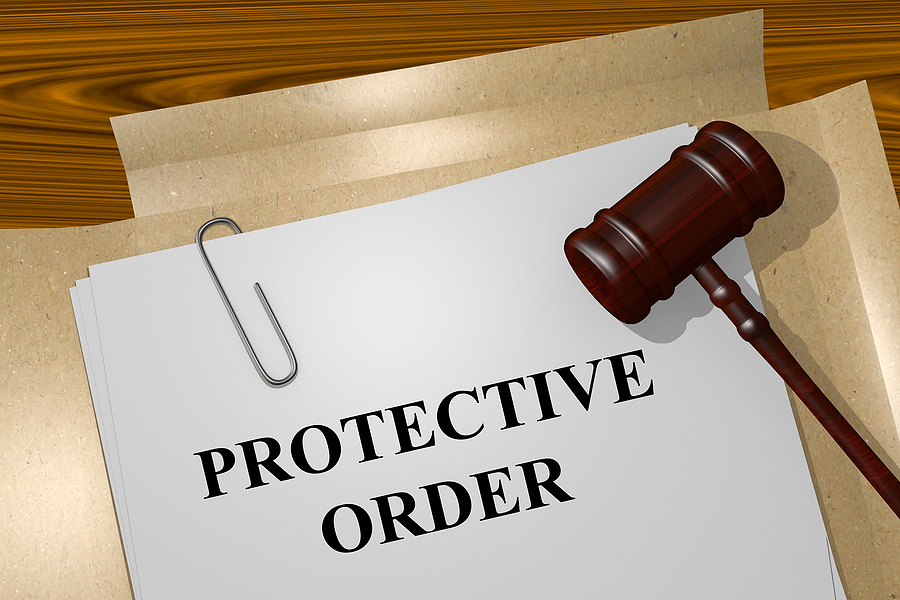
Zackey Rahimi wouldn’t be considered a good guy in anyone’s book. Take a look at this impressive record . . .
Between December 2020 and January 2021, Rahimi was involved in five shootings in and around Arlington, Texas.1 On December 1, after selling narcotics to an individual, he fired multiple shots into that individual’s residence. The following day, Rahimi was involved in a car accident. He exited his vehicle, shot at the other driver, and fled the scene. He returned to the scene in a different vehicle and shot at the other driver’s car. On December 22, Rahimi shot at a constable’s vehicle. On January 7, Rahimi fired multiple shots in the air after his friend’s credit card was declined at a Whataburger restaurant.
But when he was slapped with a domestic violence protective order in 2020 that prohibited him from possessing a firearm, he hadn’t been convicted of anything.
After that mini crime spree described above, he was arrested and convicted of possession of a firearm while under a protective order. His attorneys appealed the conviction, arguing that was a violation of his due process and Second Amendment rights.
His first appeal to the Fifth Circuit Court of Appeals was denied, but that was before Bruen. After the Supreme Court handed down that decision, the Fifth Circuit took another look at the case and overturned the conviction. As you’d expect, the usual suspects lost their minds. The Supreme Court decided to hear the case and the government loved this opportunity to take a bite out of Bruen, given this was a case with a bad guy who’d done bad things.
Today, in an 8 to 1 decision (Justice Thomas dissented), the Court held that it is constitutional under the Second Amendment to temporarily disarm individuals through domestic violence restraining orders who are found to be threats.
Chief Justice Roberts wrote the majority opinion . . .
When an individual poses a clear threat of physical violence to another, the threatening individual may be disarmed.
And . . .
When a restraining order contains a finding that an individual poses a credible threat to the physical safety of an intimate partner, that individual may—consistent with the Second Amendment—be banned from possessing firearms while the order is in effect. Since the founding, our Nation’s firearm laws have included provisions preventing individuals who threaten physical harm to others from misusing firearms. As applied to the facts of this case, Section 922(g)(8) fits comfortably within this tradition.
In his dissent, Justice Thomas argues that the government failed to prove that disarming individuals who haven’t been convicted of a crime is consistent with the Second Amendment’s text, history, and tradition.
A firearm regulation that falls within the Second Amendment’s plain text is unconstitutional unless it is consistent with the Nation’s historical tradition of firearm regulation. Not a single historical regulation justifies the statute at issue . . .
For those worried about the potential reach of today’s ruling, most observers are considering this a narrow ruling that doesn’t undo Bruen . . .
On the Bruen methodology, I think it’s important not to exaggerate the impact of today’s tweaks. The courts were never going to invalidate most gun control laws. They will likely strike down broad and extreme laws. Obviously tweaks to methodology will affect the precise line.
— Robert Leider (@LeiderRob) June 21, 2024
SNW’s legal contributor LKB is off doing other legal things at the moment, but will follow up with a detailed analysis of the meaning of the Rahimi decision soon. Watch this space.

Wonder how far that clear/credible threat wording can be stretched.
As far as they can and them some, “just in case”…
That’s the problem. They can’t be trusted with power. That’s why it’s very dangerous for them to have power. If our rulers were moral people, this might work.
Our Constitution was made only for a moral and religious people. It is wholly inadequate to the government of any other. –John Adams
…those in positions of authority now have a different understanding of justice and morality than the Founders.” According to Dr. West, the post-war “elite” no longer viewed the purpose of government as being to secure the rights of citizens…
https://onlinecoursesblog.hillsdale.edu/our-constitution-was-made-only-for-a-moral-and-religious-people/
I’m disappointed that due process was blithely ignored in that ruling.
Now watch the fascists make having a heated argument with someone grounds for disarmament.
I also await LKB’s insight when he has a chance…
I believe Rahimi was offered due process. He signed/agreed to the restraining order. This reinforces knowing your rights, and at least having a public defender.
However, your “heated argument” comment is spot on. The Court opened up the door to denying rights on the “presumptiveness of dangerousness”. That is a slippery slope. In fact, several of the concurring opinions (Alito and Kagan did not write opinions – everyone else did) warned inferior court judges from being overly broad with “dangerousness”.
In haste (I was in a deposition this morning when the case dropped, and have just had a chance to skim things over lunch before I submerge for the rest of the day):
Bottom line: as I predicted, the fact that Rahimi is a very bad guy was just too much for a majority to stomach letting him off the hook, but fortunately I think the ruling may have probably strengthened / expanded Bruen in some respects.
(1) As my Guttman scaling / process by elimination analysis predicted, Roberts had the pen on the majority opinion. It is VERY narrow: Rahimi’s facial challenge (much higher burden than an “as applied” challenge) to the statute failed because there was a **individualized** judicial finding (thus satisfying due process) that Rahimi was, in fact, dangerous.
(2) Unanimous court rejects the government’s fallback argument that gov’t can lawfully disarm “not responsible” persons. That probably dooms the new NY CC system, and I read them doing so as a shot across the bow of a number of courts.
(3) Separate concurrences by Kavanaugh, Gorsuch, and Barrett, all making clear that they are not abandoning Bruen and making all sorts of comments that do not bode well for lots of gun control laws currently being challenged. (I think making persons convicted for nondangerous crimes into prohibited persons is almost certainly going to be nuked.) It is possible that one or more of the concurrences were written in reaction to a broader initial opinion by Roberts, who then had to narrow his opinion to maintain a fifth vote in support of it.
(4) Predictable concurrences by Sotomajor (joined by Kagan) and Jackson, all wanting to ditch Bruen.
(5) Tour de force dissent from Thomas. Best part was where he obliterated the argument that the statute was required to disarm dangerous individuals, pointing out that there are already criminal laws on the books, and that the State of Texas could simply have arrested, convicted, and locked Rahimi up if he did what he was asserted to have done.
There is a LOT to unpack in these opinions. Will probably try and write something up over the weekend.
LKB – I found it curious that there were 7 opinions written, especially in an 8-1 case.
Any comment on that? And I, as a non-lawyer, love your summation. It’s more nuanced than what I read/interpreted from the ruling – I’m still generally concerned about inferior courts using it to declare any individual as “dangerous”.
It is unusual but not unheard of in a high profile case on a hot button issue. And a lot of this is bleeding edge constitutional theory, which gives these uber-law nerds a chance to seriously geek out.
See also my point (3) above: — Roberts may have written an initial opinion that was MUCH broader than Alito/Gorsuch/Kavanaugh/Barrett could stomach, and they wrote their concurrences in expectation of concurring only in part to his decision (which would have meant that his broader reasoning would not have been controlling precedent as it did not have 5 votes). That would have led to the sort of procedural / precedential mess that gives Roberts hives, and may have prompted him to turn it down several notches. (Short of a leak from a Court insider, however, we’ll probably never know.)
As an example of the kind of mess a splintered court can make, recall the Bakke affirmative action case. There, the lower courts found that the minority admission quotas for the UC medical school illegally discriminated against Alan Bakke.
At SCOTUS, there were four votes (Burger, Stewart, Stevens, Rehnquist) that would have held that any racial discrimination was illegal, and thus would have affirmed.
There were four votes (Brennan, White, Marshall, Blackmun, that would have held that racial discrimination against whites was OK, and thus would have reversed.
That left Justice Powell in the middle. He held that the use of *quotas* was indeed illegal, and thus affirmed the decision below (drawing the four votes from the first group for the result). But he also held (in a fit of judicial activism, as the issue wasn’t before the court) that non-quota racial discrimination in the name of “diversity” was OK (thus drawing the four votes from the latter group for that holding). (This was the genesis of the whole “diversity” excuse for racial discrimination that now permeates American society).
“(I think making persons convicted for nondangerous crimes into prohibited persons is almost certainly going to be nuked.)”
Be still my (for the time being, anyway) beating heart, that will be *massive* for the gun industry if it comes to be.
So massive, new ammo plants will need to be constructed to meet the demand of tens of millions of newly-eligible POTG eager to enjoy their new freedom…
For those of you wanting to read other knowledgeable commentary on today’s decision, here’s former UCLA law prof (now Hoover Institute Senior Fellow) Eugene Volokh’s quick thoughts on the decision:
https://reason.com/volokh/2024/06/21/some-takeaways-from-todays-rahimi-second-amendment-opinions/